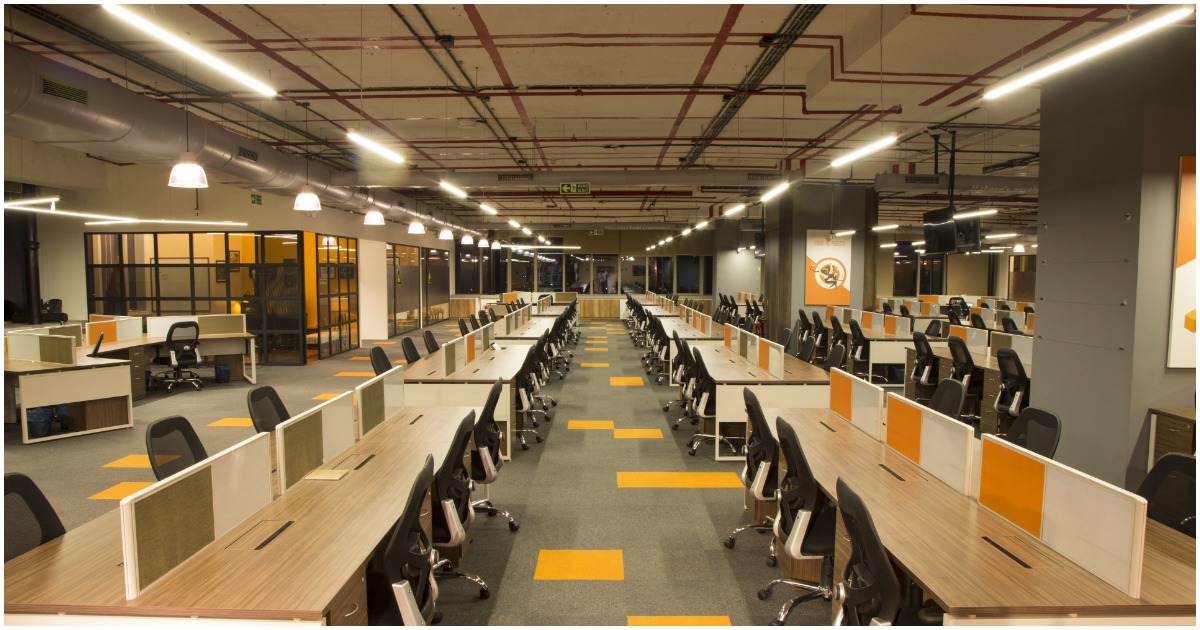As the lockdowns ease and businesses can return to their physical office spaces, the challenge becomes how they can do so safely. Ensuring that effective hygiene practices are maintained and social distancing measures are adhered to are just a couple of examples that are creating concern for employers.
Companies must prioritize enhanced health and safety in order to successfully transition back to physical workspaces, when it comes to supporting their workers. According to a recent survey, one in ten employees in the US reported that no amount of preventive measures would make them feel safe to return to their place of work.
Technology-based solutions have advanced so dramatically in recent years that companies must consider these as they resume ‘business as usual.’
Here we’ll look at the COVID-19 office reopening guidelines and some of the top office technology-based solutions that will help you return to work safely.
Photo by Domenico Loia on Unsplash
Portable technologies
Portable technology devices, such as tablets and laptops, have facilitated the need for remote work through the pandemic. They will continue to play a crucial factor in protecting staff moving forward. Regular use of portable devices ensures the ease with which an employee can transition between home and work depending upon their health.
It’s surprising just how many businesses weren’t reliant upon portable devices prior to the pandemic. Now, it’s far more commonplace and is a simple solution to maintaining flexibility and minimal disruption if a staff member is not fit for the office.
Remote collaboration platforms
In addition to relying on portable devices for flexibility, it goes hand-in-hand with the vastly increased use of remote communication software.
Since the pandemic began, platforms such as Microsoft Teams, Zoom, and Slack have experienced a colossal rise in demand. This trend is set to continue as businesses will continue to require collaboration flexibility as they return to physical workspaces.
Occupancy level controls
Businesses must exercise tight control over numbers when returning to the office to prevent overcrowding. Small teams can manage this with relative ease, but more extensive operations may require a tech-based solution. The best way to ensure that an office never reaches full capacity is to implement technologies to monitor and manage it for you.
For example, you can install occupancy sensors to track where staff most often work and gather, identifying dense areas that can pose a higher contamination risk.
Distancing technologies
UK-based robotics company, Tharsus, has responded to the need for social distancing by developing wearables that can help workers safely distance themselves from their colleagues.
Essentially a ‘smart necklace,’ this futuristic design is worn around the neck and alerts the wearer whenever their proximity to another employee appears too close. The Manufacturing Technology Centre has been trialing it, and Tharsus plans to roll out the technology throughout workplaces such as warehouses, canteens, and offices.
Screening temperatures
Thermal imaging cameras are being suggested as a potentially efficient way of increasing safety precautions at returning workplaces. The cameras detect heat radiating from people using infrared technology and use the data to estimate the person’s body temperature.
Developed by surveillance technology company Digital Barriers, this technology is already in use at English Rugby training grounds, and British Telecommunications giant Vodafone intends to roll them out in their offices. However, the World Health Organization has cast doubt over the effectiveness of the temperature screening technology, so it remains to be seen as to whether this approach will gather any momentum.
Touchless technologies
Reducing the transmission of viruses is high on the list of concerns for all, and workplace hygiene policies will inevitably need to change dramatically as workers return.
Various technology-based solutions can significantly reduce the risk of the spread of disease within the workplace. Gesture technology, for example, utilizes movement sensors to remove the need for physical touch. These sensors can work effectively at high-risk points such as bathrooms, doorways, and elevators.
Similarly, companies can install voice-activated technologies to control the operation of lights, fans, and doors. By using touchless technologies, workplaces can significantly reduce the risk of disease transmission by providing solutions that eliminate the need for physical touch, especially in high-traffic areas.
Photo by Israel Andrade on Unsplash
Final thoughts
The conditions of the pandemic have brought about considerable advancements in technologies, as well as the adoption of them. As the world returns to some level of normalcy, there will continue to be a heightened concern for viral transmission and safety at work.
Maintaining the flexibility of remote working and collaboration will help to keep anyone unwell away from the physical workspace. Additionally, increasing the awareness of the importance of thorough hygiene practices and the implementation of touchless technologies will further protect workers from the risks of avoidable virus transmissions.
Taking these precautions will prove instrumental to the safe return to the workplace and provide confidence and peace of mind to a company’s workforce.
